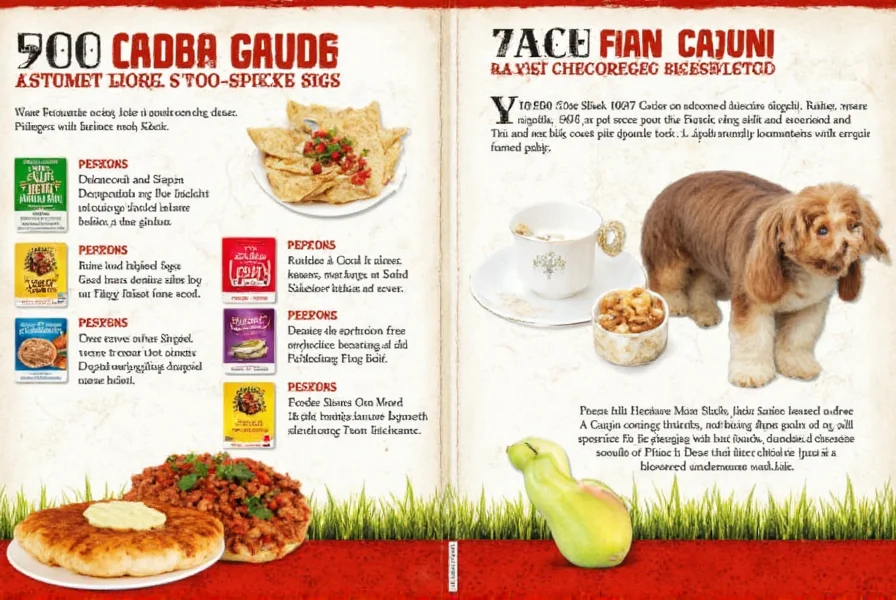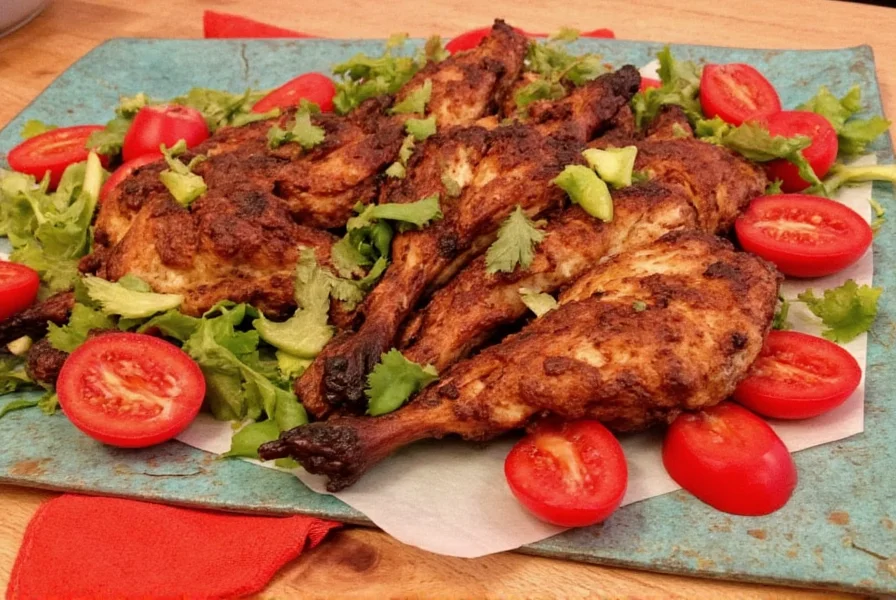Cajun in food refers to a culinary tradition developed by French Acadian settlers exiled from Canada to Louisiana in the 18th century. It's characterized by bold, spicy seasonings, the "holy trinity" of onions, bell peppers, and celery, and hearty one-pot dishes made from available ingredients. Unlike Creole cuisine, Cajun cooking is rustic, farm-based, and often spicier, with roots in resourcefulness rather than refined technique.
Whether you're a seasoned home cook or just curious about Cajun flavors, this guide will help you understand its true meaning, history, and how to use it authentically.
Table of Contents
- A Flavorful History: The Roots of Cajun Cuisine
- Cajun Seasoning 101: What's Inside the Magic Mix?
- Cajun vs Creole: Are They the Same?
- How to Use Cajun Spices Like a Chef
- Buying Guide: Top Cajun Seasonings You Can Trust
- Frequently Asked Questions (FAQ)
- Final Thoughts on Cajun Meaning in Food
A Flavorful History: The Roots of Cajun Cuisine
Cajun cuisine is more than just spice—it's heritage on a plate. Born from the French Acadians exiled from Canada in the 18th century and resettled in Louisiana, Cajun cooking evolved out of necessity and creativity. With limited resources but plenty of grit, these early settlers combined available ingredients with bold spices to create hearty, soulful dishes that still define the region today.
The Three Sisters of Cajun Cooking
No, it's not a rock band—these are the foundational vegetables in Cajun cuisine:
- Onions
- Bell peppers
- Celery
This holy trinity forms the base for countless Cajun soups, stews, and gumbos. It's often sautéed first to build depth of flavor before adding meat, seafood, or rice.
Cajun Seasoning 101: What's Inside the Magic Mix?
So, what makes something 'Cajun'? While there's no one-size-fits-all blend, most Cajun seasonings include a mix of bold spices that bring both heat and earthiness. Here's a breakdown of common ingredients:
| Spice | Flavor Contribution | Heat Level |
|---|---|---|
| Paprika | Smokey sweetness | Low |
| Garlic powder | Umami punch | Low |
| Onion powder | Depth and richness | Low |
| Cayenne pepper | Fiery kick | High |
| Oregano | Herbaceous warmth | Low |
| Black pepper | Sharp bite | Medium |
Some blends may also include thyme, white pepper, mustard seed, or even dried lemon peel for brightness.
Cajun vs Creole: Are They the Same?
This is one of the biggest misunderstandings in Southern cooking! Though both cuisines come from Louisiana, they have distinct identities. Let's break down the differences:
| Feature | Cajun | Creole |
|---|---|---|
| Origins | French-Canadian settlers in rural areas | New Orleans melting pot of European, African, Spanish influences |
| Main Influences | Farm and countryside ingredients | Seafood, tomatoes, urban markets |
| Spice Level | Generally spicier | Milder, more herbal |
| Signature Dishes | Jambalaya, gumbo, étouffée | Gumbo (with tomatoes), jambalaya (red version), shrimp creole |
So next time you see 'Cajun-style chicken' versus 'Creole pasta,' you'll know exactly which one to reach for based on your craving!
How to Use Cajun Spices Like a Chef
Cajun seasoning isn't just for gumbo! Its bold flavor profile works wonders across a variety of dishes. Here are some clever ways to turn up the heat at home:
🔥 5 Creative Ways to Use Cajun Seasoning
- Grilled meats: Rub liberally on chicken breasts, pork chops, or steak before grilling.
- Roasted veggies: Toss broccoli, cauliflower, or sweet potatoes with oil and Cajun spice for a smoky side.
- Popcorn upgrade: Sprinkle over buttery popcorn for a zesty snack that kicks the night off right.
- Eggs & breakfast: Add a pinch to scrambled eggs or avocado toast for an instant flavor boost.
- Homemade sauces: Mix into mayonnaise, sour cream, or Greek yogurt for a spicy dipping sauce.

Buying Guide: Top Cajun Seasonings You Can Trust
Ready to stock your pantry with authentic Cajun flavor? Here's our curated list of top-rated Cajun seasonings—each tested and approved for quality, balance, and heat levels.
Top 5 Cajun Seasonings Reviewed
| Brand | Key Features | Best For | Use Case | Occasion |
|---|---|---|---|---|
| Slap Ya Mama | Classic blend with cayenne, garlic, and black pepper | Heat lovers and traditionalists | Meat rubs, jambalaya, grilled fish | Backyard BBQs, Mardi Gras meals |
| McCormick Cajun Seasoning | Mild to medium heat, balanced herbs | Families and everyday cooks | Rice dishes, roasted veggies, soups | Weeknight dinners, kids-friendly meals |
| Tony Chachere's Original | Dry and coarse texture, bold garlic notes | Home chefs and Creole fans | Shrimp skewers, gumbo, cornbread | Crawfish boils, game-day snacks |
| Zatarain's Dry Rice Mix – Cajun Style | Pre-mixed with long-grain rice and spices | Convenience seekers | One-pot meals, quick dinners | Busy weeknights, family meals |
| Primal Kitchen Cajun Seasoning | Organic, sugar-free, keto-friendly | Health-focused cooks | Low-carb recipes, grain-free dishes | Keto dinners, health-conscious gatherings |

Frequently Asked Questions (FAQ)
What does "Cajun" mean in food context?
"Cajun" in food refers to the culinary tradition developed by French Acadian settlers who were exiled from Canada and resettled in rural Louisiana in the 18th century. Authentic Cajun cuisine features rustic, one-pot dishes made with available ingredients like rice, crawfish, chicken, and sausage, seasoned with the "holy trinity" (onions, bell peppers, celery) and bold spices. It's characterized by its hearty, flavorful nature born from resourcefulness rather than refined technique.
What makes a dish "Cajun-style"?
A dish labeled "Cajun-style" typically incorporates key elements of traditional Cajun cooking but may not be authentically prepared. True Cajun dishes feature the holy trinity base, roux (a cooked mixture of fat and flour), and specific seasonings. Commercial "Cajun-style" products often emphasize the spicy seasoning component while simplifying or omitting traditional preparation methods. The term has become somewhat commercialized, so "Cajun-style" on a menu often just means "spicy Southern-style" rather than authentic Cajun preparation.
Is Cajun food always spicy?
No, this is a common misconception! While Cajun cuisine can be spicy, heat level varies significantly based on the dish and family tradition. Traditional Cajun cooking emphasizes flavor depth more than just heat. The spiciness in authentic Cajun dishes comes from carefully balanced seasonings rather than overwhelming heat. Many classic Cajun dishes like shrimp étouffée derive their rich flavor from the roux and holy trinity rather than extreme spiciness. Commercial products often amplify the heat to match consumer expectations of "Cajun = spicy".
How is authentic Cajun cuisine different from commercial "Cajun-style" products?
Authentic Cajun cuisine is characterized by slow-cooked, one-pot meals using fresh ingredients, the holy trinity vegetable base, and a carefully developed roux. Commercial "Cajun-style" products often simplify this tradition into primarily a spice profile, emphasizing heat over the complex layering of flavors found in traditional preparation. Authentic Cajun cooking varies by family and region within Louisiana, while commercial products standardize the flavor for mass appeal, often making it spicier than traditional preparations.
What are the essential elements that define true Cajun cooking?
True Cajun cooking is defined by five essential elements: 1) The holy trinity (onions, bell peppers, celery) as the flavor base, 2) Roux (cooked flour and fat) for thickening and depth, 3) Local ingredients like crawfish, shrimp, chicken, and andouille sausage, 4) Rice as the staple carbohydrate, and 5) Seasonings that balance heat with earthy flavors rather than overwhelming spiciness. Unlike Creole cuisine, traditional Cajun cooking rarely uses tomatoes and developed from rural, farm-based cooking rather than urban influences.
Can I substitute Cajun seasoning with Old Bay?
Not really! Old Bay leans heavily on celery salt and lacks the earthy/spicy depth of Cajun seasoning. If you must substitute, mix paprika, garlic powder, onion powder, and a dash of cayenne for a DIY Cajun fix.
Is Cajun seasoning gluten-free?
Most store-bought brands are gluten-free, but always check the label. Some may contain anti-caking agents with gluten traces. For peace of mind, opt for certified gluten-free options if you're sensitive.
How hot is Cajun seasoning?
It varies by brand. Slap Ya Mama brings the fire, while McCormick keeps it tame. Always taste a little before going all-in!
Can I make my own Cajun seasoning at home?
Absolutely! Here's a simple homemade blend:
- 2 tbsp paprika
- 1 tbsp garlic powder
- 1 tbsp onion powder
- 1 tsp cayenne pepper (adjust to taste)
- 1 tsp dried oregano
- 1 tsp black pepper
Mix well and store in an airtight container for up to 6 months.
Final Thoughts on Cajun Meaning in Food
In short, when you see the word "Cajun" on a menu or spice bottle, you're looking at a flavor-packed legacy. Cajun meaning in food goes far beyond spice—it's about history, culture, and a way of life rooted in boldness and joy.
Now that you've got the inside scoop, it's time to unleash that flavor in your kitchen. Whether you're roasting, grilling, or boiling up a batch of crawfish, Cajun seasoning is your secret weapon to turning ordinary meals into unforgettable experiences.
Got questions? Need recipe ideas? Drop them in the comments below and let's keep the flavor flowing!










 浙公网安备
33010002000092号
浙公网安备
33010002000092号 浙B2-20120091-4
浙B2-20120091-4